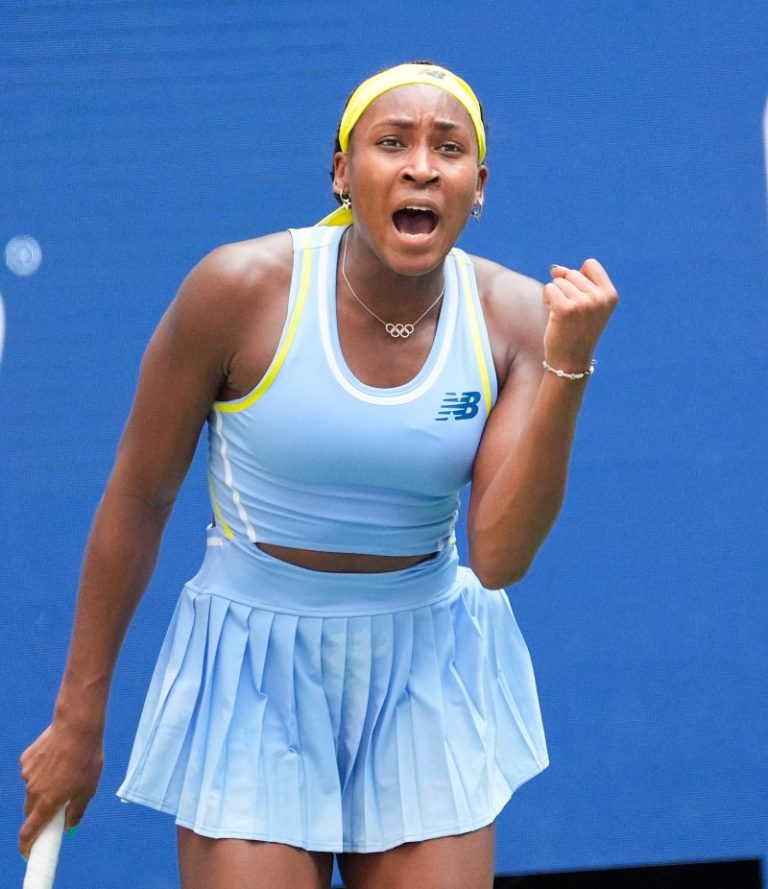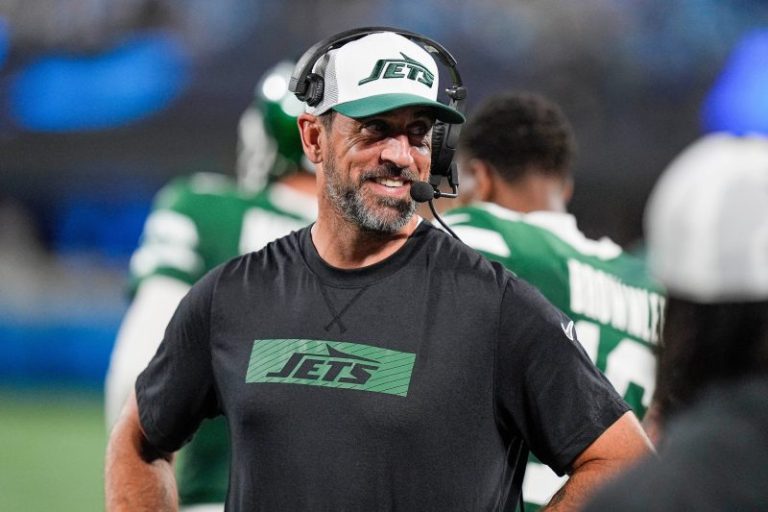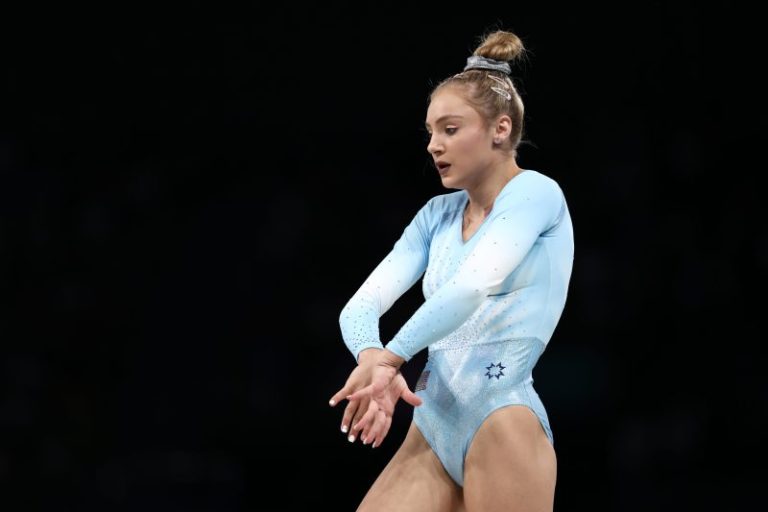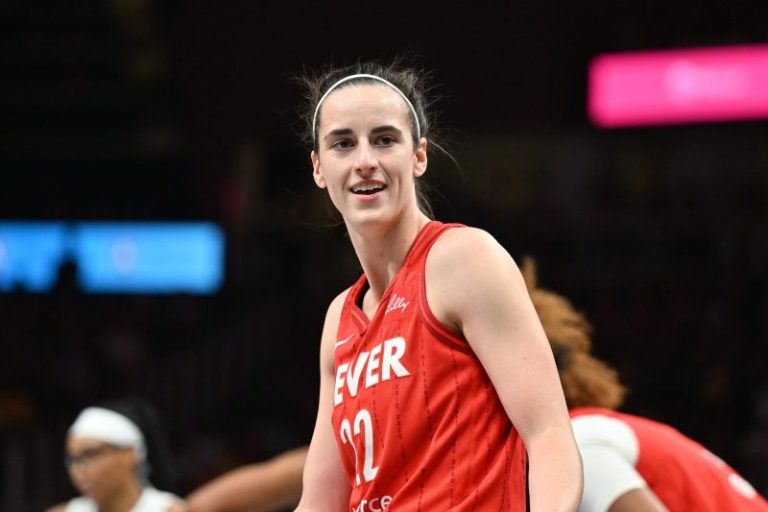NASHVILLE, Tenn. — A block away from the neon-lit buzz of Lower Broadway, where honky-tonk pours onto the city’s main drag at all hours, stands the Music City Center, a venue that’s hosted everything from craft beer conferences to a performance by the legendary Dolly Parton.
In late July, the complex filled up for something entirely different. It was the biggest bitcoin conference of the year, and the headline act was none other than former President Donald Trump.
For nearly 50 minutes on a Saturday afternoon in the country music capital, the Republican nominee for president extolled the virtues of bitcoin and spelled out what a second Trump administration would mean for the crypto industry to a packed crowd of conferencegoers who’d spent hours getting through the Secret Service’s tight security protocol.
“If crypto is going to define the future, I want it to be mined, minted and made in the USA,” Trump declared, in a message targeted to the industry’s bitcoin miners, who secure the network by running large banks of high-powered machines. “We will be creating so much electricity that you’ll be saying, ‘Please, please, President, we don’t want any more electricity. We can’t stand it!’”
The speech, which read like it was straight out of a bitcoiner’s bible, was quite the about-face for an ex-president who three years earlier had dismissed the cryptocurrency as a “scam.” Trump was, no doubt, lured by the potential of huge amounts of donor money from an industry that sees itself as under constant attack from the Biden-Harris administration and the heavy regulatory hand of SEC Chair Gary Gensler.
Trump told the audience in Nashville that he’d raised $25 million in crypto-related funds, a number that CNBC hasn’t been able to independently verify.
Turning Trump from a skeptic into a sudden bitcoin evangelist took the work, behind closed doors, of a small army of bitcoiners and other crypto advocates who were able to maneuver their way into the candidate’s inner circle. In particular, three friends in Puerto Rico came together to try and convince the Republican presidential hopeful of bitcoin’s value, and to eventually make that position loud and clear to a key audience in Nashville.
In bitcoin parlance, Trump was “orange-pilled.” It’s a play on the phrase “red pill” from the 1999 film, “The Matrix.” In the movie, the main character, Neo (played by Keanu Reeves), is given a choice of taking a red pill, which offers access to the unsettling truth about the world, or a blue pill, which signifies a false but far more comforting version of reality.
Orange pill refers to bitcoin’s official color and represents a person’s dedication to bitcoin over fiat currencies.
Within the matrix of confidantes, friends, family members and colleagues united in their mission to orange-pill Trump were the trio of Puerto Rico residents: Amanda Fabiano, the shadow chief of bitcoin miners; Tracy Hoyos-López, a former California prosecutor; and David Bailey, CEO of media group BTC Inc. and organizer of the conference in Nashville.
Earlier this year, Bailey promised to turn out $100 million and 5 million votes for Trump. CNBC is told an update on fundraising numbers is coming soon.
Over the Memorial Day weekend at a steakhouse called Bottles in the Guaynabo suburb of San Juan, the three began mapping out a plan as they shared family style dishes.
Here’s how Fabiano recounted the initial exchange to CNBC.
“We were at dinner with a bunch of people, and David was like, ‘Hey, I’ve been talking to the administration, and I want to do a roundtable on mining, Can we chat this weekend?’” Fabiano said.
Bailey had spent months in dialogue with the Trump campaign, swapping bitcoin briefs and messages. He was about to make the 1,600-mile trek to meet the former president for the first time at Trump Tower in Manhattan, and was keen to deliver details of a potentially lucrative fundraiser and a miners working group featuring some of the top CEOs in the industry. It would serve as a prelude for what was to come in Nashville.
Hoyos-López, Bailey’s neighbor, had been recently orange-pilled, and was anxious to help out any way she could in getting Trump to Nashville. She happened to have a contact in the Trump orbit who was willing to make an introduction. Meanwhile, Fabiano’s history in bitcoin mining was important in giving the group street cred.
“Without Amanda, we wouldn’t have had the legitimacy to sell that this is a legitimate business,” Hoyos-López said. “She is the mining queen. She’s got all the miners.”
Hoyos-López added that many miners are former Wall Street executives.
“If you want to be taken seriously, you have to take serious people,” she said. “And it doesn’t get any more serious than miners.”
The Trump campaign didn’t respond to multiple inquiries about Trump’s latest crypto fundraising stats, his changed views on bitcoin and the events leading up to his appearance in Nashville.
Bitcoin and some other cryptocurrencies are created by miners around the world running high-powered computers that collectively validate transactions and simultaneously create new tokens. Their massive physical presence shows up in the form of sprawling data centers across the globe and offers a tangible image for newbies to understand an otherwise abstract technology.
Fabiano described it as a natural fit “when thinking about how to explain bitcoin to Trump in a way that makes sense.”
Bitcoin often gets a bad rap for the amount of energy it consumes, which is just shy of how much power Egypt uses annually. But as mining requires tremendous amounts of energy, the industry is developing innovative methods of producing and sharing it.
Miners can partner with utilities in a way that allows them to return energy to the grid when there’s excessive demand. They’re also utilizing untapped sources of renewable energy, often concentrated in remote parts of the country, helping to create an economy in areas that would otherwise be dormant. That could all lead to the U.S. becoming a greater producer of energy, which is of particular importance to satisfy the needs of the artificial intelligence boom.
Bailey confirmed that he flew to New York to meet with Trump, but he wouldn’t share specifics about what was said in the meeting. What’s clear is that, soon thereafter, Trump agreed to host about a dozen crypto executives and experts for a 90-minute roundtable in a small tea room at his Mar-a-Lago Club in Palm Beach, Florida.
That meeting took place in mid-June, two weeks after the dinner at Bottles.
To get Trump on board with the big shindig in Nashville, Bailey, Fabiano and Hoyos-López knew they needed the right mix of people to clearly explain the virtues of mining and to convince the nominee that donations would be large enough to make the event worth his time.
“It was like, ‘Who would we put in the room? Who would be the best people to explain this, right? Who would be willing to put dollars up, kind of put their skin in the game?’ And that was how it all got started,” Fabiano said.
Those who committed to going pitched in $500,000 apiece to a fundraising committee, according to multiple attendees.
Fabiano, who had never previously been involved in politics or campaigning, said the biggest concern among prospective attendees was the fear of appearing partisan. She said ahead of the meeting there was “a prep call for agenda items.”
Fabiano put together a presentation for the Trump team with background material on the miners who would be at the Mar-a-Lago roundtable to show that, “We are real people, and we are real businesses, and you should take us seriously.”
With thunderstorms bearing down on the Atlantic coast, the Mar-a-Lago attendees, including representatives from Riot Platforms, Marathon Digital Holdings, TeraWulf and Core Scientific, forfeited their smartphones to a radio-frequency identification pouch that blocked incoming and outgoing signals. From under a large chandelier, they listened to the former president engage on the nuances of America’s energy deficit, bitcoin mining, AI, and competition with China.
“That roundtable really set off like, ‘OK, this industry is real, and they’re showing up with dollars, and they’re showing up with like, actual smart things to say and agenda items that are important to America,’” said Fabiano.
After years of facing political backlash, Fabiano said she was glad Trump took an active interest in “digging in and learning about why this industry is real” and “why we’re not a bunch of criminals.”
Fabiano and crew knew they weren’t starting from scratch with Trump.
Bailey started talks with the Trump camp in March. In April, Trump launched his latest nonfungible token collection on the Solana blockchain. In May, he became the first major presidential nominee to accept cryptocurrency donations. He’d started talking on the campaign trail about defending so-called self-custody of coins and vowed at the Libertarian National Convention in May to keep Sen. Elizabeth Warren, D-Mass., and “her goons” away from bitcoin holders.
In early June in San Francisco, technologists, crypto executives and venture capitalists paid up to $300,000 per ticket to join a Trump fundraiser that ultimately raised more than $12 million. The more Trump raised, the more he leaned into his newfound support.
“There are a lot of people in Trump’s orbit that are fans of bitcoin,” said Bailey. “There are members of his family that are fans of bitcoin. Donald Trump has sold real estate for bitcoin. I just bought a pair of sneakers from him in bitcoin.”
Bailey said Trump’s journey from cynic to fan is relatable. He said Michael Saylor, the billionaire founder of MicroStrategy, was once a skeptic and that he’s been on a personal journey himself for 12 years.
“There is no necessarily single person who’s responsible for orange-pilling him,” Bailey said, of Trump. “I think in terms of him having a 180 on this topic, that is really a very natural thing.”
After months of dialogue with Trump and his aides, Bailey said he thinks the former president’s attraction to bitcoin is that it “represents a transformational opportunity for the country.”
“In that sense, I think it’s kind of a match made in heaven,” he said.
Hoyos-López said the period between the Mar-a-Lago meeting in June and the Nashville conference late last month was “agonizing,” as the group waited for an answer.
The first “yes” from the Trump camp was to the meeting in Manhattan, and the news was delivered by phone to Hoyos-López while Bailey was in Japan. The conference was more than a month out. Hoyos-López said she jumped in her car and drove to Bailey’s house so she and his wife, Emily, could prepare the one suit he had in his closet.
“We couldn’t find any dry cleaners that would have this in time in Puerto Rico,” Hoyos-López said. “We ended up having to get super creative, like putting his suit in the dryer, putting his suit in the sun, steaming it.”
There was a lot of work to be done in a little amount of time.
Soon after the Mar-a-Lago roundtable, Trump said yes to Nashville.
“I’m a criminal attorney, I was a prosecutor, so I’m used to dealing with very big and very emotional moments, but not treating them as such,” Hoyos-López said. “While everyone is excited and celebrating, I’m like, ‘Alright, well, we need to sit down and figure out.’”
Three months earlier, Bailey’s wildest dream was to get Trump to Nashville. He talked about it often with his core group of friends in Puerto Rico, a U.S. territory with crypto-friendly policies, including huge tax breaks to those who spend at least 183 days on the island each year.
“Never in a million years, did we think we were going to be here,” Hoyos-López said. “Getting a presidential candidate to the Bitcoin Conference was definitely one of the coolest things that I probably will ever do in my life.”
At the conference, Hoyos-López, Fabiano and Bailey worked to stage a second roundtable with Trump. They brought in a wider set of industry participants, including the Winklevoss twins, Coinbase Chief Legal Officer Paul Grewal and Cantor Fitzgerald CEO Howard Lutnick. Kid Rock, Billy Ray Cyrus and some top mining executives were also there, along with a smattering of politicians.
Trump, in his keynote, donned a blue-and-white-striped tie and an American flag pinned to the lapel of his navy blue suit. He declared that a Trump White House would “keep 100% of all the bitcoin the U.S. government currently holds or acquires into the future,” and said he would fire SEC Chair Gensler.
To Fabiano, Bailey, and Hoyos-López, the stakes couldn’t possibly be higher, as Democratic nominee Kamala Harris gains momentum in the polls.
“Our industry as a whole will cease to exist if Trump doesn’t win,” Hoyos-López said. “There are some rumors out there that Harris is trying to change her stance on crypto as a whole, and to appear more friendly, but I just don’t believe anything that they say.”
Hoyos-López said she’s now focused on getting out votes and rallying bitcoiners who she says are “single-issue voters.”
“Yes, the money that you get in is very important,” she said. “But what really matters at the end of the day is votes.”
Less than a week after leaving Nashville, Fabiano, Hoyos-López and Bailey were back together closer to home to process all that had happened. They met at a restaurant called Santaella and shared a mix of Puerto Rican tapas, including a personal favorite — goat cheese quesadilla with nuts and honey on top.
“We just sat down and had a conversation about like, ‘Holy crap. We did this,’” Hoyos-Lopez said. “We created the table, and we brought everyone to the table, which is literally what this community is all about.”
This post appeared first on NBC NEWS










